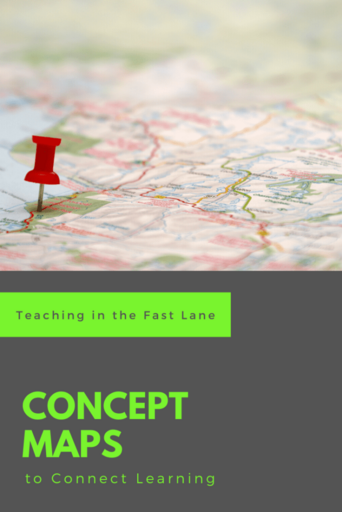
Concept Maps help to organize information in an easy to read and utilize formation. They are a great way to help students refer back to their learning and go well with interactive notebooking or on their own.
Why Use Concept Maps?
Research surrounding Concept Maps show an increased retention of new knowledge for students that create them. While there are many types of Concept Maps students can create, a simple branched map is the most common. These maps allow students to choose the most important information and organize it in a way that makes sense to them.
How to Get the Most Out of Concept Maps
These steps can be used to encourage students to think deeply about the material and organize it in a way they can refer back to easily.
Choose Your Concept Map Materials
You may choose to stick with paper and pencil or use whiteboards, but if you want to integrate technology there are options such as Padlet or other flowchart style apps that allow students to create a Concept Map that meets their needs.
While there are hundreds of tools out there to choose from, I would pick one or two to master rather than trying to use them all.
Identify the Main Idea
At the center, or top, of the Concept Map, students should identify the main idea, or what the map will be about. This serves as the heading and jumping off point for students to work from.
Build the Concept Map
Beginning with the main idea students have identified, they should brainstorm categories or topics that fit within that space and write them around the main idea.
Each map is going to look different based on the topic and the student’s knowledge. I prefer not to give any restraints when it comes to creating a Concept Map as I want to see what students know.
Alternatively, you may choose to have students list what they know first. Then place it on the map in a way that makes sense. This strategy allows for more control of the organization of topics.
Elaborate the Concept Map
Once students have built out their map they are ready to add even more detail. They can also establish connections between different topics and how they relate to the main idea.
This process may include writing down questions students have they can further research or reach out to their peers about.
How to Modify Concept Maps to Reach More Learners
- Use images cut from magazines and newspapers instead of writing to elaborate and illustrate a topic.
- Complete Concept Maps in partners or teams to increase collaboration.
- Use questioning techniques to draw out students’ knowledge on a specified topic.
- Have students research the topic to generate additional connections for their maps.
Ideas for Using Concept Maps
Concept Maps can be used across the curriculum. They serve as a great way to gauge students’ knowledge of a topic. Below are a few ways I have used Concept Maps with students in the past.
- Map the events that led to and followed a historical event with facts including causes and effects.
- Create a map of the features, landforms, and economy of the regions of a state or country.
- Make a map of the main idea of a nonfiction passage and its supporting details.
- Map a character’s traits and feelings from a read aloud.
Try Concept Mapping Today
I challenge you to look at your plans. Choose an area where you and your students can create a Concept Map today.
You may choose to start by creating a map together or jump in feet first and have students create their own maps!
Want More Quick Teaching Tips?
Subscribe to our newsletter to get our latest blog posts by email.
